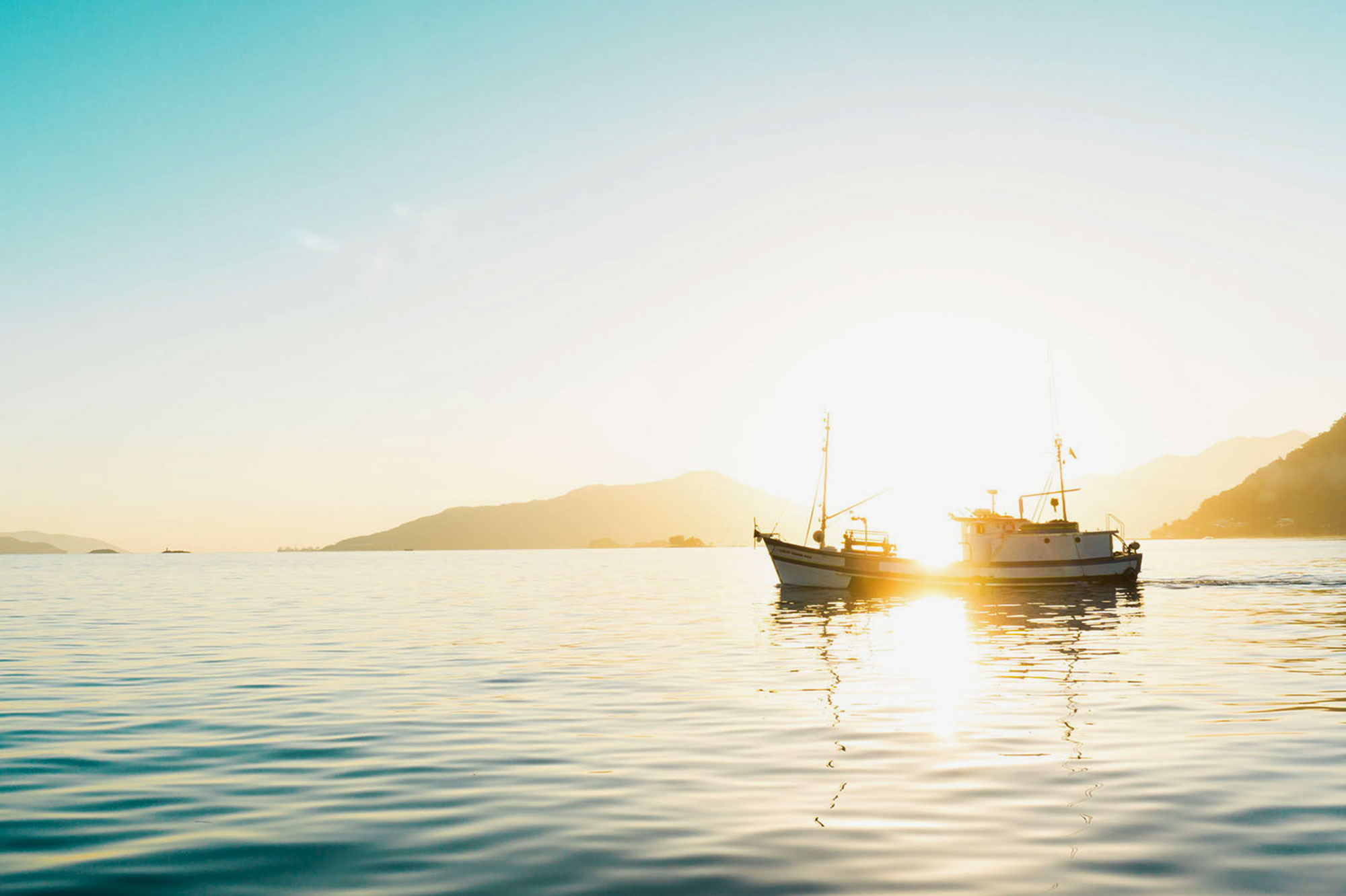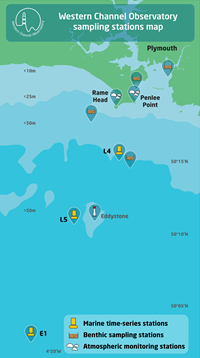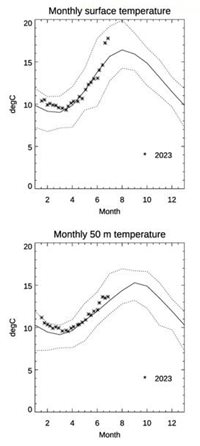Story
What we know about marine heatwaves
30 June 2023
Marine heatwaves have been headline news over the last couple of weeks. Here we explain what they are, how they are caused and what impact they have on the marine environment.

What is a marine heatwave?
A marine heatwave refers to a prolonged period of unusually warm ocean temperatures in a specific region. They can occur in both coastal and open ocean areas and their duration can range from weeks to months, or even years.
What causes marine heatwaves?
Marine heatwaves can be caused by a variety of factors, including changes in ocean currents, atmospheric patterns and climate change.
How often do marine heatwaves occur?
Marine heatwaves have occurred every few years in various places across the globe, however, it is estimated that marine heatwaves are increasing in frequency by 50% in the past 10 years and are becoming more severe.
What is so special about the current marine heatwave in the news?
The current marine heatwave is setting some record-breaking temperatures. According to the Met Office, the global sea surface temperatures for both April and May 2023 were the highest on record in a series stretching back to 1850, with May seeing temperatures about 1.25°C above the average over the reference period of 1961 to 1990.However it does not mean that the entire water column, from surface to seabed, is experiencing the same level of warming. Warming always starts at the surface because the sun is the source of the heat and as cold water is denser than warmer water, the cold naturally sinks to the bottom. The more the water is heated at the top, the greater the temperature difference is between the surface and the bottom, until the water forms layers of different temperatures i.e. it stratifies. Strong physical inputs, like high winds, storms, strong tides and currents, mixes the water and breaks down the stratification but if there is a lot of sun, no cloud and very little mixing this can produce a very warm surface layer. This kind of stratification happens all over the world where the conditions are calm enough, the water sufficiently deep and the tides are not too strong.
What is the data from the Western Channel Observatory showing?
 Data from the Western Channel Observatory is corroborating this stratification scenario. At the 2 sampling stations in the Western English Channel, L4 and E1, surface temperatures were about average until mid-June when the surface waters began warming more rapidly. Temperatures at around 50m depth are possibly warmer than expected but within the statistical range.
Data from the Western Channel Observatory is corroborating this stratification scenario. At the 2 sampling stations in the Western English Channel, L4 and E1, surface temperatures were about average until mid-June when the surface waters began warming more rapidly. Temperatures at around 50m depth are possibly warmer than expected but within the statistical range.A combination of lasting conditions has encouraged strong surface warming including:
- A blocking anticyclone to the NW of the UK; a big area of high pressure that has remained almost stationary for an extended period of time.
- Clear skies and strong insolation, caused by the Sun making more direct contact with the surface of the Earth.
- Relatively weak winds, limiting water mixing.
- June neap tides, which are weaker than their Spring counterparts and often result in reduce mixing.
- Time of the year when there are longer days, when heat is absorbed by the water and shorter nights when heat is lost.
 Long-term datasets of the water column are the only way of setting these events within the historical record. In 2022 there were 3 heatwaves in July and August with similar patterns of strong surface heating, which were constrained within the top 5m and quickly eroded when weather patterns changed. Datasets which measure the breadth of ecosystem variables, such as physics, chemistry and biology, can show the impacts of these events, generally months afterwards, but possible impacts could be seen throughout the food chain.
Long-term datasets of the water column are the only way of setting these events within the historical record. In 2022 there were 3 heatwaves in July and August with similar patterns of strong surface heating, which were constrained within the top 5m and quickly eroded when weather patterns changed. Datasets which measure the breadth of ecosystem variables, such as physics, chemistry and biology, can show the impacts of these events, generally months afterwards, but possible impacts could be seen throughout the food chain.
What impact can marine heatwaves have on marine species and the environment?
Marine heatwaves can have significant impacts on marine ecosystems and the species that depend on them. Marine heatwaves can disrupt the food chain by altering the distribution and abundance of marine species, affecting plants, plankton, fish populations, marine mammals, seabirds, and other organisms. At their worst they can be responsible for mass mortality events. Additionally, marine heatwaves can have economic and social consequences. They can impact fisheries, affecting the abundance and distribution of fish stocks, and can disrupt aquaculture operations, either directly by warmer temperatures affecting stocks due to reduced oxygen but also indirectly by creating conditions that may encourage harmful algal species to bloom. Not only can these harmful algal blooms have negative consequences for aquaculture stocks but they can also be harmful to humans.
What impact can marine heatwaves have in the longer term?
If persistent, marine heat waves can have pronounced and long-lasting impacts on key ecosystems. For example, higher water temperatures can lead to coral bleaching, where corals expel their symbiotic algae and turn white, which can result in the death of these ecologically important and visually stunning habitats. There may also be widespread species redistribution, which will not only alter ecosystems but could also have significant consequences for marine-based industries, such as fishing and aquaculture.
What work is PML doing on marine heatwaves?
PML’s research covers a range aspects relating to marine heatwaves. Firstly it holds one of the longest temperature datasets in the world, which was started by the Marine Biological Association (MBA) in 1903. Through the Western Channel Observatory, led by PML with valuable contributions by the MBA, this temperature monitoring continues today and has been extended to include other environmental factors, such as salinity, chlorophyll and nutrients, supported by an array of state-of-the-art monitoring equipment. Investigations on species- and ecosystem-level responses to temperature increase have also been undertaken and included 30 years of plankton data. PML’s world-leading Earth Observation team is also at the forefront of satellite monitoring of sea surface temperature and other marine conditions.
Related information
Marine heatwaves coverage by ITV News
Western Channel Observatory